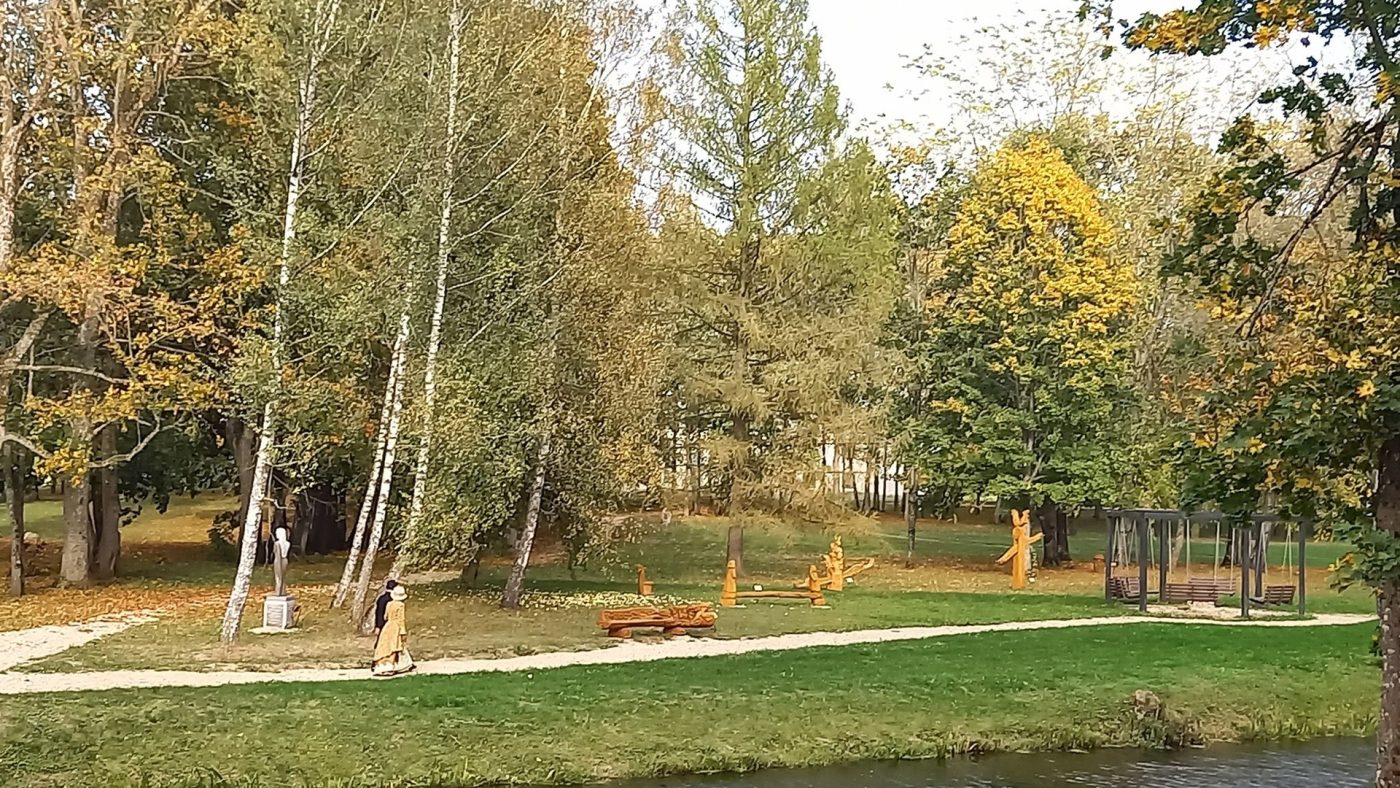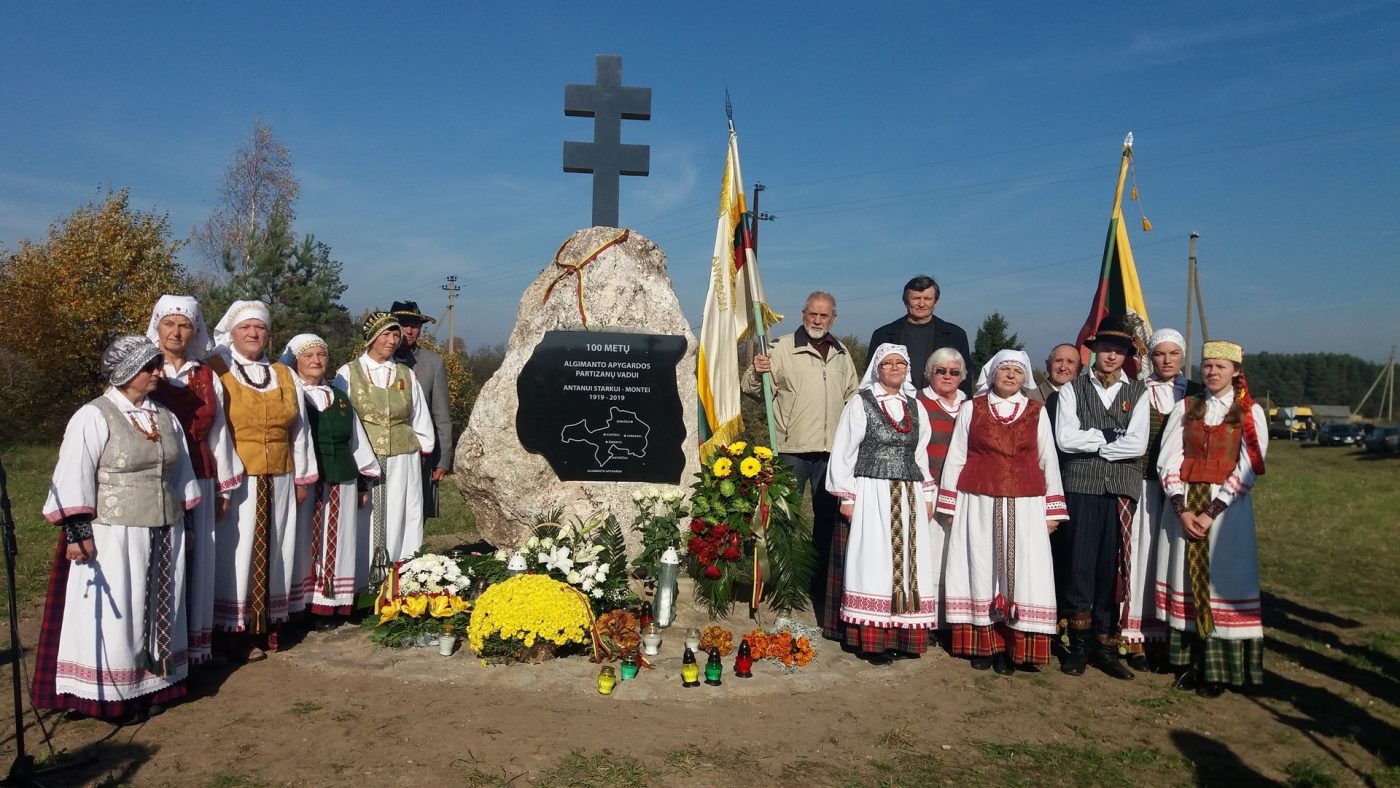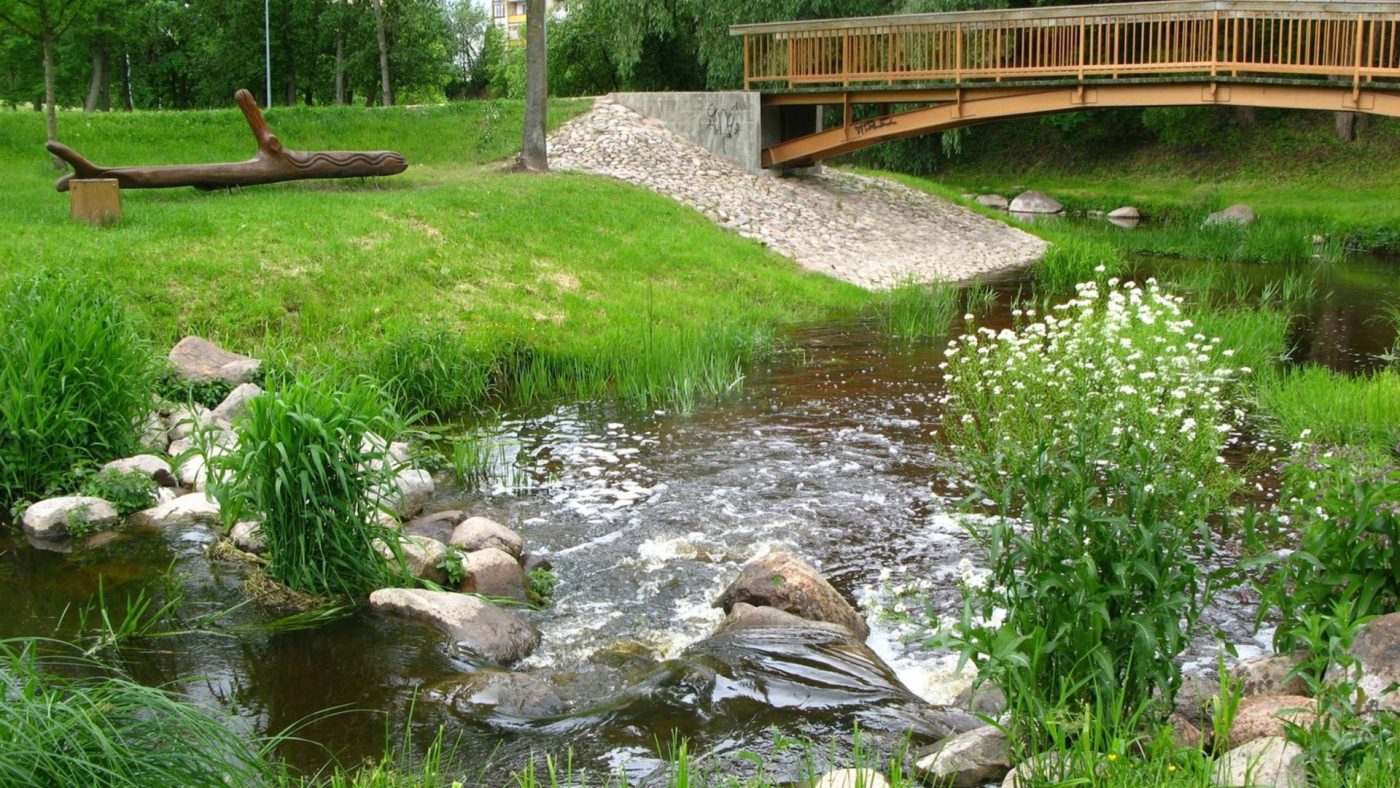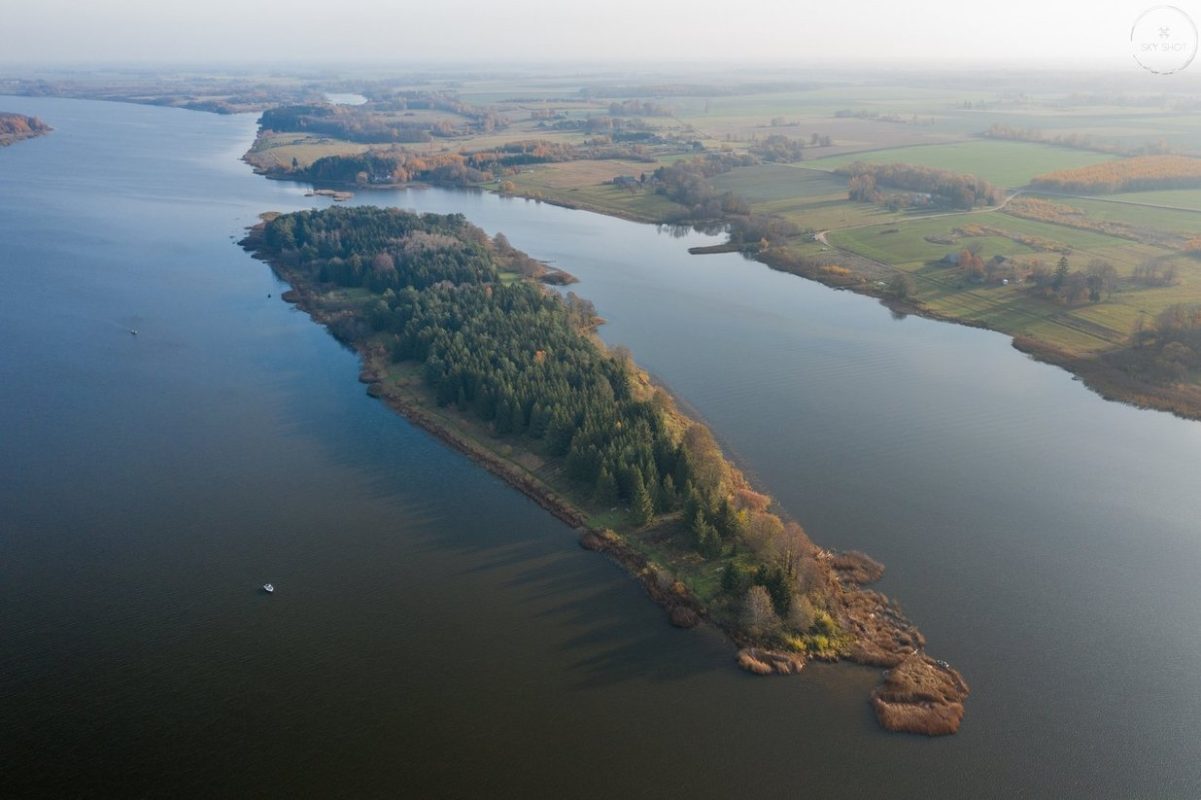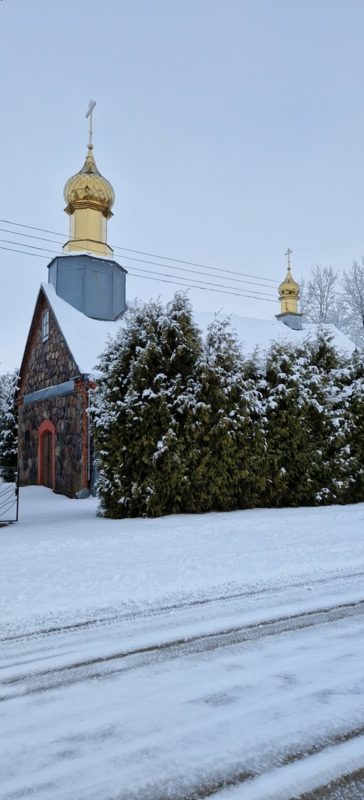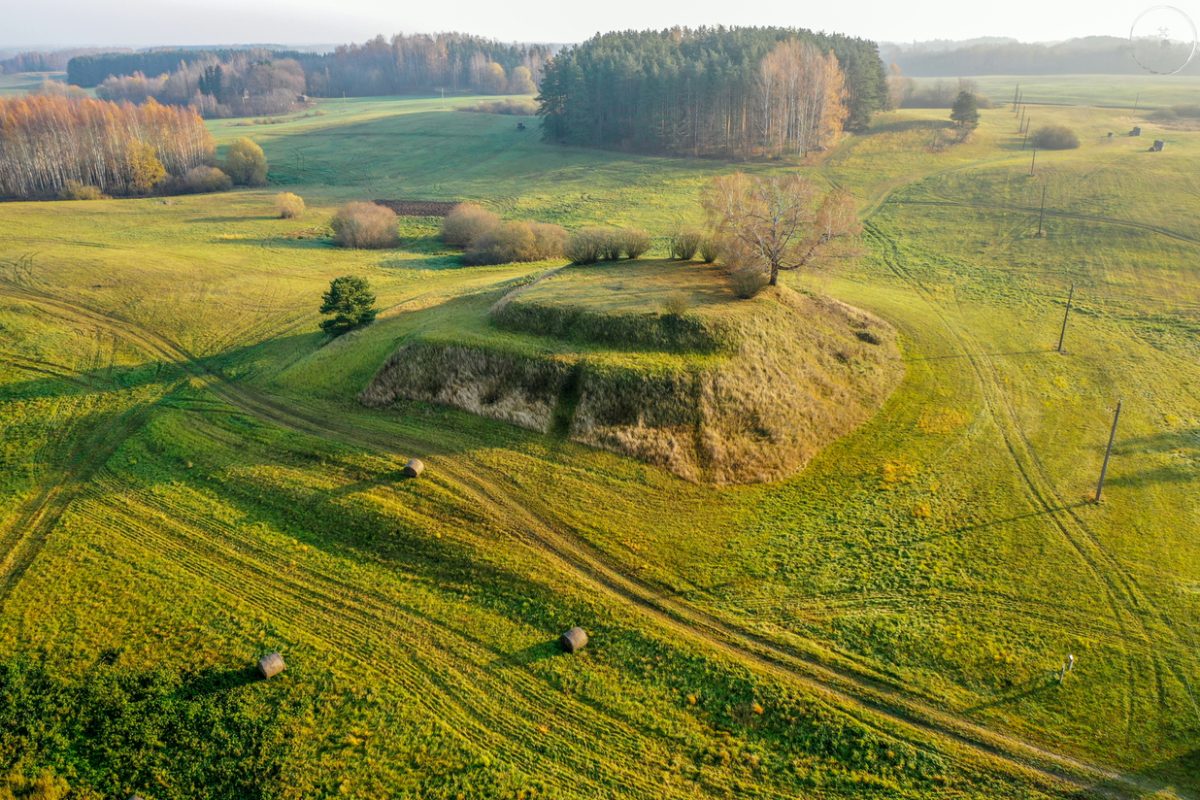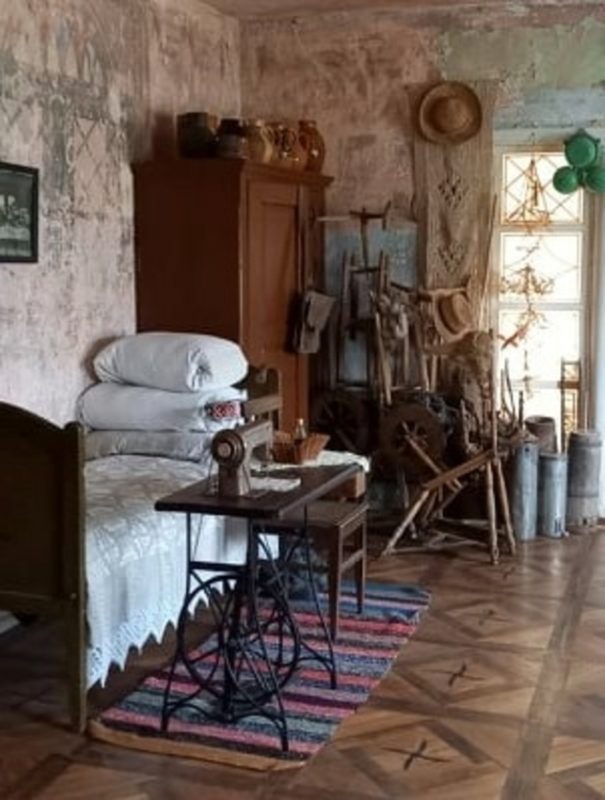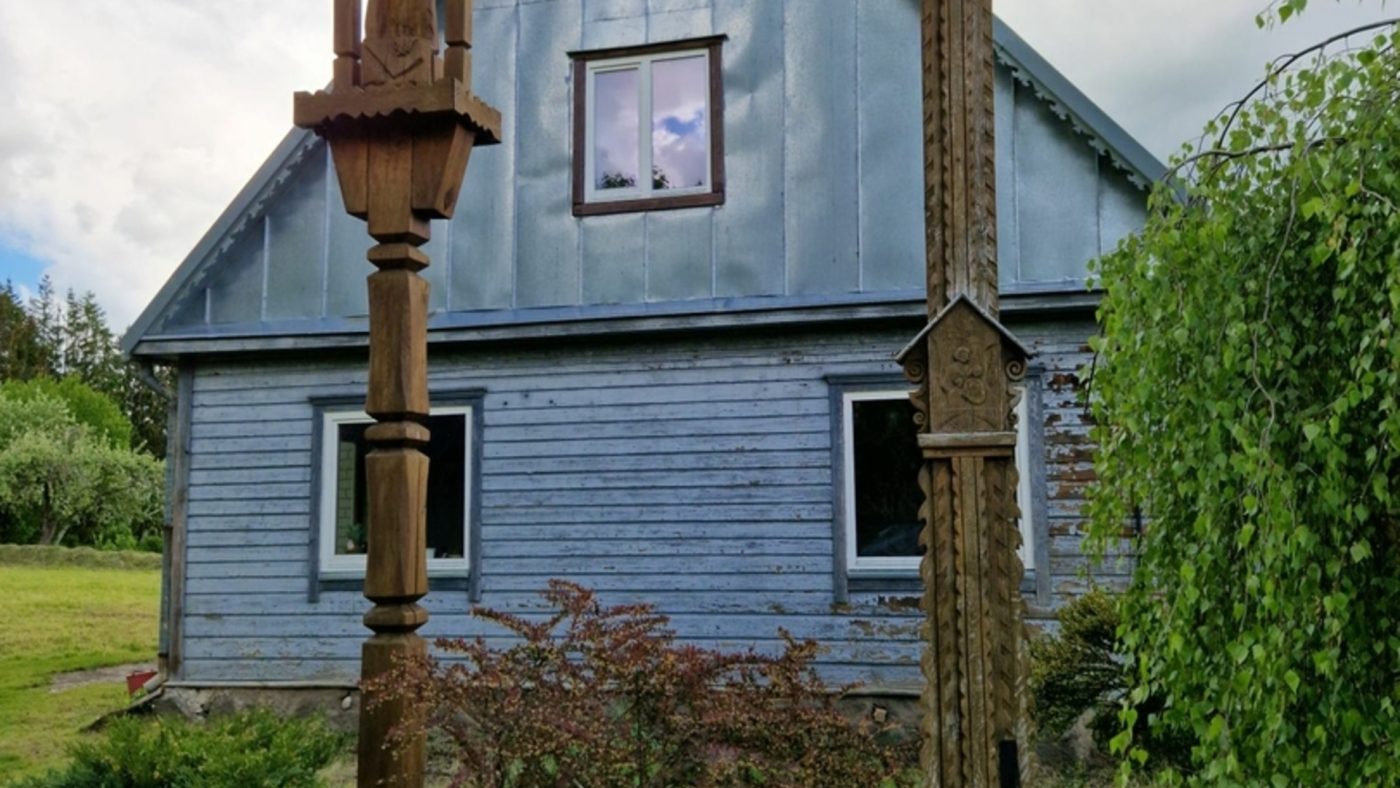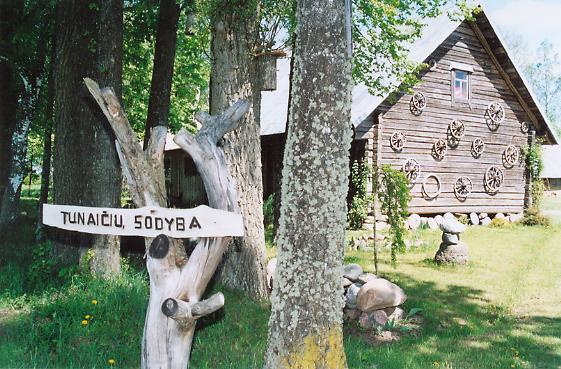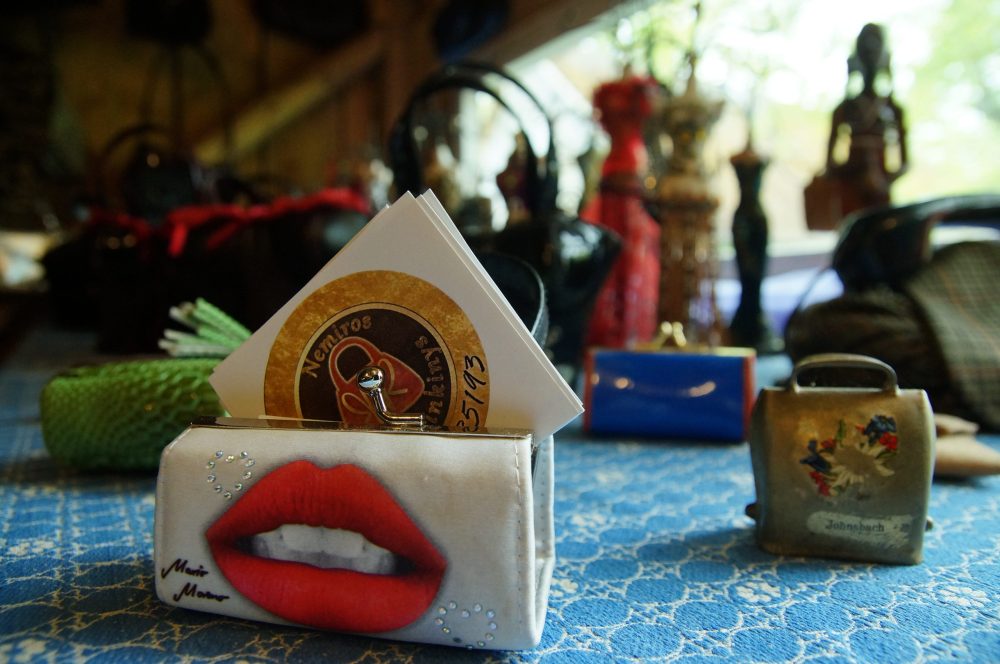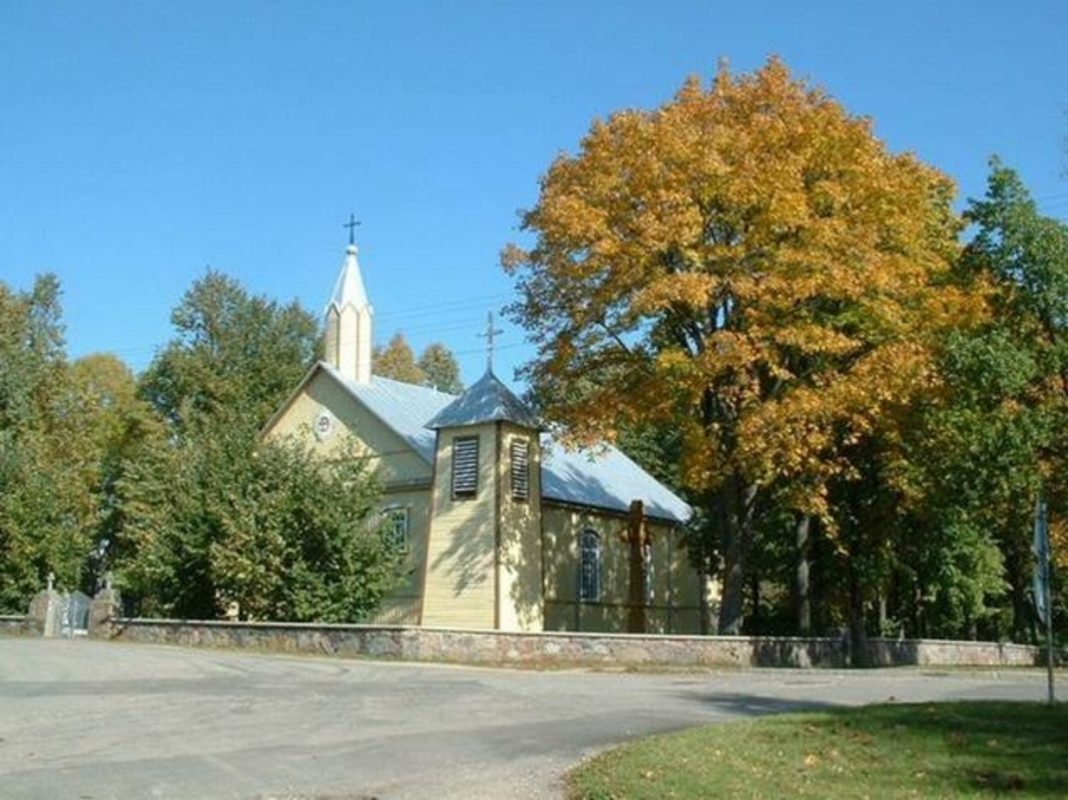Adomynė Manor and its surrounding estates belonged to the parishes of Svėdasai, Šimoniai, and Skapiškis, with Adomynė itself being part of the Svėdasai parish. The local residents had to travel 8 to 15 kilometers to reach the church. The owner of Adomynė Manor, Adomas Vilėniškis, known for his charitable works, decided to build a church in Adomynė at his own expense. In 1913, after obtaining the necessary permits, construction of the church began, but it was halted by the outbreak of World War I. After Adomas Vilėniškis passed away in 1921, his nephew, priest Juozapas Vilėniškis, continued the construction work. On October 23, 1921, the church was consecrated in the name of the Virgin Mary. The church, measuring 12 sieksnių in length and 6 sieksnių in width, was built from pine logs and featured three altars and two small sacristies.
The church plans were prepared by engineer A. Skrinikov, who was paid 200 rubles, with the total construction cost amounting to 8479 rubles and 2 kopecks. Adomas Vilėniškis donated 3050 rubles, 20 desyatinas of land, and half of the manor house for the rectory. Approximately 1200-1300 local residents contributed to the construction of the church.
Significant work was required to furnish the church interior. Three altars needed to be built, and paintings and other inventory had to be acquired. According to the Adomynė parish's income and expenditure book, in 1921, 44,620 auksinas were paid to architect Nikita for various works. In 1922, the painting "Holy Virgin Angelic" was acquired for 1300 auksinas, while paintings of St. Anthony and St. Stephen were purchased for 40 gold rubles each. In 1923, the painting "Prayer of Jesus in the Garden of Olives" (author unknown) for the main altar was bought for 100 gold rubles. Most of the paintings in the church were created by Ignas Šlapelis, an art historian related to Karolina Šlapelytė, the second wife of Gasparas Vilėniškis. Ignas Šlapelis often visited Adomas Vilėniškis' manor and was closely associated with priest Juozapas
Vilėniškis. The Adomynė church features Stations of the Cross paintings and other altar paintings believed to be the work of Ignas Šlapelis.
In the autumn of 1928, the Adomynė parish was established and consecrated in the name of the Blessed Virgin Mary.
In 1935, near the church, construction of a parish house (rectory) began, organized by church marshal Kazimieras Lapienis from Vadonys village. Parishioners donated wood and money for the construction, which was carried out by local craftsmen. The parish house accommodated the organist and the church caretaker, known as "pročka." An additional parish hall was built for various organizational meetings, youth gatherings, concerts, and plays. After World War II, the parish house was nationalized, and half of the manor house, belonging to the rectory, was also nationalized. These premises housed various local institutions, while the priest resided in a part of the manor house belonging to Barbora Vilėniškytė. In 1960, priest Antanas Vaškevičius built a new rectory and moved in.
Adomynė parish belonged to the Utena Deanery, with 2085 Catholics in 1926. According to the "Alphabetical List of Villages" compiled by priest Juozas Vilėniškis in 1934, the parish had 382 households and 1991 residents. In 2001, the parish had 795 members.
In the churchyard of Adomynė church are buried the parish founder, canon Juozapas Vilėniškis (1873–1952), priest Aloyzas Raugalė (1911–1942), and deported priest Steponas Pelešynas (1908–1984). Adomynė cemetery is the final resting place of church founder Adomas Vilėniškis, his brother Gasparas and his family, and Gasparas' children Uršulė, Barbora, Antanas, and Elena. In the Adomynė parish cemetery, the bodies of the "Algimantas" district commander Antanas Starkus-Montė and his comrades who died on November 1, 1949, are buried. A monument was erected during the Revival period, and in September 1990, a cross was erected in the Adomynė churchyard to commemorate the restoration of Lithuania's independence.





 Entertainment
Entertainment
 Food establishments
Food establishments





























 55.748627, 25.305353
55.748627, 25.305353
 Get directions
Get directions








.jpg)
